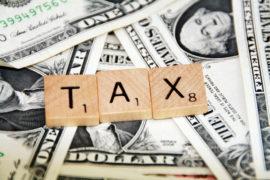
Recent and persistent economic troubles across the country have many hearkening back to a more prosperous time, and entrepreneurs investing in 50s-style diners are hoping to turn nostalgia into gold. 5 & Diner CEO Bob Watson likes to tell customers he is rebuilding America “one milkshake at a time,” and he may be on to something, considering the market niche made $34 billion in sales last year. Although the 5 & Diner is catching on in popularity, it must still contend with the family-dining giants filed in the same category, like Denny’s, IHOP and Cracker Barrel. For more on this continue reading the following article from TheStreet.
5 & Diner, a 50s-themed restaurant franchise, is looking to cash in on nostalgia for a simpler, more prosperous era.
In the 1950s, the diner was a mainstay in American culture. The establishment was a place where teens and families came to eat burgers and fries, pot roast and milkshakes. It was the center of social activity as jukeboxes played and open seating was designed to encourage socialization.
The Great Recession has left its mark on America in the form of stubbornly high unemployment and a long foreclosure pipeline. Harkening to a 1950s-1960s period when unemployment was below 3% and home mortgage rates equally low could be refreshing for consumers, or in a word, instill in today’s diner the word most commonly associated with that halcyon era: happiness.
"We’re trying to make America a happier place and that’s what 5 & Diner is about," CEO Bob Watson says. "I tell customers all the time we are rebuilding America one milkshake at a time."
It’s in this way that 5 & Diner, which currently has 12 restaurants, plans to grab a larger piece of the so-called family dining industry. It’s a big, if slowly growing restaurant sector, reaching $34 billion in annual sales last year.
Watson was at first a 5 & Diner franchisee before claiming his corporate position. He and his wife Laurie are owners of LPM Holding Co., a large food service contractor, catering and event rental company in Maynard, Mass.
The Watsons were looking to diversify their business operations but stay in the food business. Since it was their first take at running a restaurant they wanted the safety of a franchised system.
They looked at many concepts but bought the rights to a 5 & Diner. In 2006, they opened a restaurant in in Worcester, Mass.
"We looked at everything from Dairy Queen to Burger King to Johnny Rockets and we settled on 5 & Diner because of how cool we thought the place was. Staff is dressed like the ’50 and ’60s. The menu is what you would call comfort food. Laurie and I went to visit and we just absolutely loved it," Watson says. "It’s really difficult to go in there and not be happy."
Watson always knew he wanted something bigger than just one location. He made sure to put a clause in his franchise agreement that if the previous franchisor decided to sell, he would come to the Watsons first.
Just two years later, they purchased the "5 & Diner" franchise rights.
Claim up to $26,000 per W2 Employee
- Billions of dollars in funding available
- Funds are available to U.S. Businesses NOW
- This is not a loan. These tax credits do not need to be repaid
The Watson’s restaurant was opened not long before the recession hit and in fact the deal to become franchisor happened during the recession. The combination of the down economy and the couple’s inexperience at running a restaurant franchise led to some painful early years. But it didn’t deter them.
"We just decided that [the concept] was undervalued and it might be something that makes sense to purchase and then as the economy comes back we could try to grow it. It really was a calculated risk," Watson says. Today Watson likes to think, with a chuckle, that he looks smart to have taken retirement funds out of the market to open the restaurant.
Watson was not without reservations. He was concerned that customers outside of New York, New Jersey and Pennsylvania wouldn’t understand the concept of a diner and that they wouldn’t be able to expand their customer base.
Luckily none of the 5 & Diner locations closed during the recession.
"I was grateful that we stared out with a franchise. We needed that kind of support. You don’t really have that in the corporate cafeteria environment," he says. "I also learned that the retail environment is a lot tougher than corporate. In some ways you’re only as good as your last meal," which proves that keeping quality and standards up is imperative, he says.
Struggling family-dining segment
The family dining segment is characterized by an average check between $8 and $12 per person, doesn’t offer full-service alcohol (if at all) and while meals are offered throughout the day, restaurants in this segment usually have a strong focus on breakfast items, according to Mary Chapman, director of product innovation at Technomic.
Larger competitors that 5 & Diner is up against in the segment include DineEquity’s(DIN) International House of Pancakes, Cracker Barrel Restaurant and Old Country Store(CBRL), Denny’s(DENN), Friendly’s and Golden Corral. And don’t forget, at least in the Northeast — the traditional independent Greek diner.
Last year, the family dining segment’s total sales were $34.4 billion, up 0.9% from the year prior, according to Technomic. The sector didn’t grow quite as much as the overall full-service dining segment at 2.5%.
"I do think it’s a distinctive experience and it’s unlike going to a Greek diner," Watson says.
Family dining seems to be struggling, according to Chapman, primarily because today the price point is more competitive given the growing fast-casual concepts (think Chipotle(CMG ) or Five Guys).
"If the average [fast-casual] check reaches up to $12 and casual dining chains average checks start around $12 with promotional deals, then price-wise they’re being hit at both sides. And so if someone is looking for a choice [based] on price, they have a lot more options," she says.
The other issue in the segment is uniqueness of menu items. Many family dining restaurants are indeed starting to experiment with more healthful options and different ways of presenting items (think frittata rather than omelet), but still be able to serve their core customer who is likely to want a more indulgent offering, Chapman notes.
Watson thinks his advantage over some of the popular burger chains like Johnny Rockets and Five Guys is the broader menu options including Mrs. Cleaver’s Pot Roast, the Big Bopper Burger and Cadillac Meatloaf.
"If you actually watch them and follow them they have a significant problem with same-store sales year-over-year. They really aren’t growing that much when you have a limited menu and what happens is the buzz is sort of dying out. I don’t want to be in that business," he says. "I want to be a diner .. that people can go to in 30 years and it still is there."
Growth plans
"When we bought the diner, the economy was unraveling. We basically made no attempt to sell franchises. Instead we spent the last few years rebuilding," Watson says.
That meant analyzing the menu for nutrition content and portion size, adding healthier options and paring down the expansive selection. They also overhauled 5 & Diner’s website and marketing materials, among other things.
"We did all the things you would normally do if you were to start a business," Watson says.
The Watsons also hired an outside consultant to analyze customer demographics so that when they were ready to expand they would be able to pick the best locations to serve its primary, secondary and tertiary demographics, Watson says.
Watson is looking to cautiously expand now that the economy is on better footing. The company has created a smaller, non-freestanding development option — meaning a restaurant that could be part of a strip mall. These require less investment because they don’t have to be built from the ground up. 5 & Diner has also started to participate in franchise trade shows. It plans to expand with both types of restaurants.
For now the company is sticking to the East Coast for expansion — New York, Pennsylvania, North Carolina and Georgia.
Realistically, Watson says he will be happy if he is able to open two new diners this year. He hopes that one day there will be 200 stores.
"We’re going to take our time. We’re going to build them one at a time. A lot of people are trying to push that harder. I’m against it. I would rather proceed slowly and have it work," he says. "I am not Subway. I am not Burger King. I am not interested in people opening stores that are going to fail."
This article was republished with permission from TheStreet.



